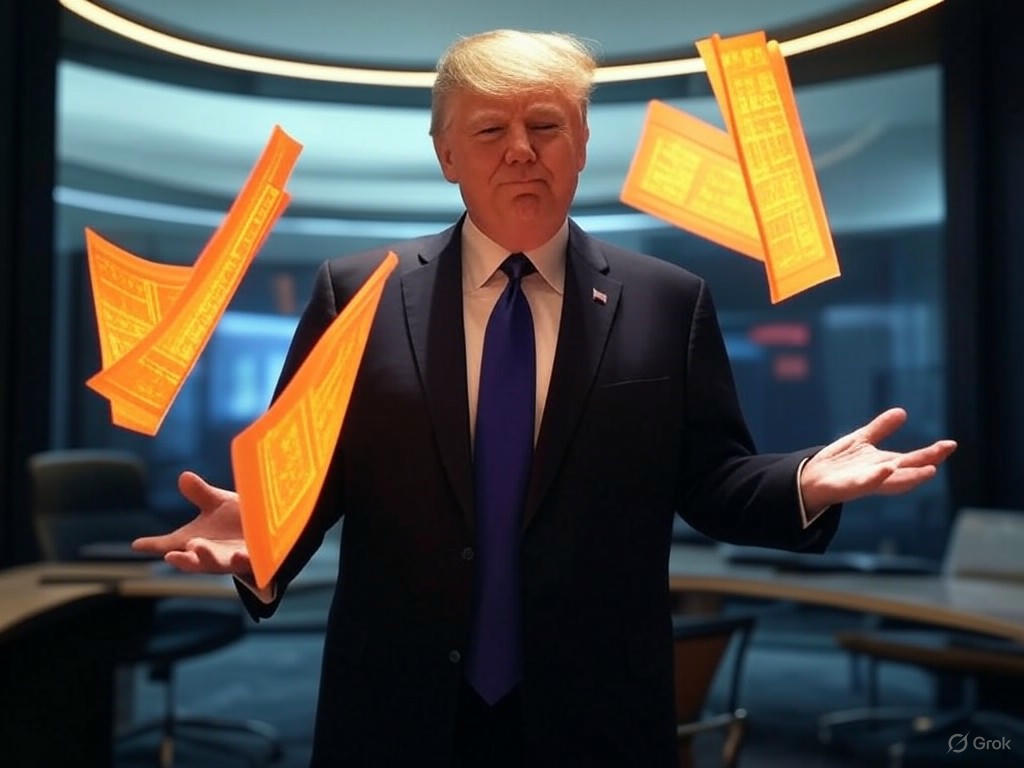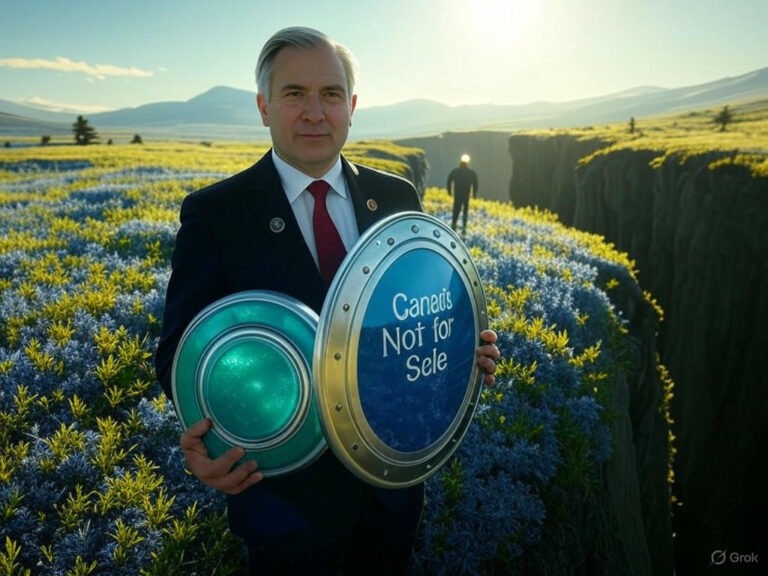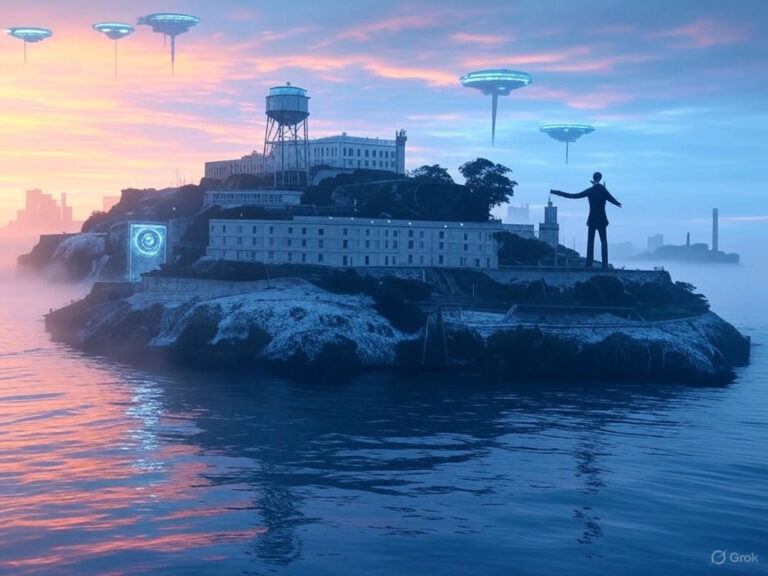
Trump News Updates: Latest Insights on Donald Trump’s Presidency
Trump’s Second Term: First 100 Days Analysis and Policy Implementation
In the early stages of Trump’s second term, the administration has wasted no time in rolling out bold policy shifts that echo his campaign rhetoric. Right from January 20, 2025, when he returned to the White House, President Donald Trump signed a series of executive orders focused on immigration, trade, and energy—moves that signal a return to his signature style of decisive action. Have you ever wondered how a president’s first 100 days can set the tone for an entire term? In Trump’s second term, these initial steps are already reshaping federal priorities, drawing clear lines from his promises to real-world changes, even as they raise questions about links to the controversial Project 2025 blueprint.
Despite Trump’s public denials of any connection to Project 2025, the overlaps are hard to ignore. This comprehensive plan, crafted by the Heritage Foundation, served as a roadmap for conservative governance, and many of its ideas are now materializing in Trump’s second term policies. For instance, executive actions on border security and federal workforce reforms mirror the document’s recommendations, showing how ideas from outside groups can influence day-to-day decisions. As we dive deeper, it’s fascinating to see how these alignments play out, potentially affecting everyday Americans through stricter immigration rules or energy deregulation.
Project 2025 Connections: Alignments in Trump’s Second Term Despite Denials
Trump’s second term has spotlighted the Project 2025 debate, even though the president distanced himself from it during his campaign, labeling some parts as unappealing. Created by the Heritage Foundation, this 900-page guide brought together over 100 conservative groups to outline a vision for governing, and now, key figures from that project are in prominent roles. Think about Russ Vought, now at the helm of the Office of Management and Budget, or John Ratcliffe as CIA director—these appointments hint at a deeper tie that could steer Trump’s second term in specific directions.
While Trump claimed he hadn’t read the document, the parallels in his policies are striking. For example, recommendations on overhauling the federal workforce to reduce bureaucracy align with early actions in his second term, aimed at streamlining government operations. This connection raises an important question: How much does external input shape a presidency? In Trump’s case, it seems these influences are helping drive a more aggressive agenda, from trade protections to environmental rollbacks, making his second term feel like a continuation of unfinished business.
Immigration Policy Implementation in Trump’s Second Term
Immigration has been a cornerstone of Trump’s second term from day one, with policies that echo Project 2025’s detailed proposals. The blueprint, written in part by former Trump official Ken Cuccinelli, suggested using military resources for border enforcement, and we’re seeing that idea take shape through new executive orders. These measures include deploying personnel to prevent illegal crossings and directing all border traffic through official ports, a move that’s already sparking debate about its humanitarian impact.
In Trump’s second term, restrictions on refugee admissions have also tightened, aligning with the plan’s emphasis on prioritizing national security. Imagine families waiting at borders, wondering how these changes will affect their futures—this policy shift isn’t just about numbers; it’s about real lives. Critics argue it could lead to legal battles, but supporters see it as a fulfillment of long-standing promises, highlighting the administration’s focus on enforcement as a key theme.
Challenges in Executing Trump’s Second Term Immigration Reforms
Implementing these immigration policies in Trump’s second term isn’t without hurdles, as legal experts predict court challenges similar to those in his first term. The administration has prepared detailed justifications to defend these actions, but the outcome remains uncertain. What might this mean for border communities? It could mean increased resources for security but also potential disruptions to trade and daily life, underscoring the balancing act of bold policy versus practical realities.
Executive Orders: Rapid Implementation in Trump’s Second Term
From the moment Trump began his second term on January 20, 2025, executive orders became the tool of choice for swift change. These directives reinstated first-term favorites, like tougher immigration enforcement, while introducing fresh ideas on trade and energy that align with Project 2025’s vision. For example, protectionist trade policies aim to shield American jobs, a strategy that could resonate with voters feeling economic pressures.
In Trump’s second term, the focus extends to expanding fossil fuel production and restructuring the federal workforce, moves designed to cut red tape and boost efficiency. If you’re running a small business affected by these changes, you might see opportunities in deregulation or challenges in navigating new rules. This approach shows how executive actions can quickly pivot government priorities, though their staying power often depends on congressional support.
Legal Challenges and Implementation Hurdles in Trump’s Second Term
As with any ambitious agenda in Trump’s second term, these executive orders face potential lawsuits that could slow their rollout. Policy analysts point out that while they offer immediate impact, true longevity requires backing from laws or court victories. This reality adds a layer of complexity—could these hurdles derail key initiatives, or will the administration adapt? Either way, it’s a reminder that governing in Trump’s second term is as much about strategy as it is about vision.
Security Concerns: Cybersecurity Challenges During Trump’s Second Term Transition
The transition into Trump’s second term wasn’t smooth, with cybersecurity threats looming large during the 2024 election and beyond. Foreign actors attempted to interfere, targeting electoral systems with attacks like ransomware and disinformation campaigns, which intelligence agencies successfully mitigated for the most part. These incidents highlight ongoing risks that could influence policy decisions in his second term, such as enhanced defenses for government contractors handling sensitive data.
In Trump’s second term, addressing these threats is crucial, especially as digital vulnerabilities persist. Picture a scenario where a cyberattack disrupts voting or spreads false information—it’s a wake-up call for stronger protections. The administration’s response could shape how we safeguard democratic processes moving forward, making cybersecurity a priority alongside traditional policy areas.
Media Landscape and Information Challenges in Trump’s Second Term
Navigating the media during Trump’s second term presents unique challenges, with digital platforms playing a bigger role in how news about his policies reaches the public. Algorithms often favor short, emotional content over in-depth analysis, which can skew perceptions of key issues like immigration reforms. This environment makes it tougher for the administration to communicate complex changes effectively, potentially amplifying misinformation.
In Trump’s second term, we’re seeing how these dynamics affect public discourse— for instance, quick social media clips might oversimplify executive orders, leading to polarized views. Have you noticed how a single post can shape opinions? By focusing on transparent communication, the administration could build trust, turning these challenges into opportunities for clearer engagement with the American people.
Political Analysis: Factors Behind Trump’s Second Term Victory
Political experts are still unpacking what led to Trump’s second term after his 2020 loss, pointing to factors like party polarization, economic discontent, and cultural shifts. Voters drawn to his stance on social issues helped solidify his base, while economic worries about inflation and jobs played a pivotal role. This mix created a powerful coalition that propelled him back into office, showing how personal grievances can drive electoral outcomes.
In Trump’s second term, understanding these dynamics is key to predicting future moves. For example, if cultural concerns continue to mobilize supporters, we might see more policies targeting those areas. It’s a fascinating study in resilience— what do you think tipped the scales in his favor?
Looking Forward: Policy Expectations for the Rest of Trump’s Second Term
As Trump’s second term progresses beyond the first 100 days, expect a continued push on domestic and international fronts. Domestically, immigration enforcement could expand with more detention facilities, while energy policies might relax regulations to favor fossil fuels. These steps could create jobs in certain sectors but raise environmental concerns, illustrating the trade-offs in his approach.
Domestic Policy Priorities in Trump’s Second Term
Trade policies in Trump’s second term are likely to grow more protectionist, with new tariffs and trade deal renegotiations on the horizon. Healthcare reforms might also emerge, potentially challenging existing systems to reduce costs. If you’re a policy enthusiast, consider how these changes could affect your community— more affordable energy versus potential climate impacts.
International Relations in Trump’s Second Term
On the global stage, Trump’s second term signals a shift toward transactional diplomacy, particularly with NATO and China. Tensions with China over trade and security are expected to intensify, while relations with Russia and conflicts in Ukraine could see new strategies. This pragmatic style might strengthen U.S. bargaining power but risks straining alliances, a development worth watching closely.
Conclusion: Evaluating the Early Impact of Trump’s Second Term
Trump’s second term has hit the ground running with policies that blend campaign promises and Project 2025 influences, despite his denials. From immigration crackdowns to regulatory changes, these early actions have galvanized his supporters while drawing fire from opponents. As we look ahead, the success of these initiatives will hinge on legal outcomes and public response— what are your thoughts on how this term is shaping up so far?
To stay informed, consider exploring more on Trump’s evolving policies and their broader implications. If you found this overview helpful, share it with others or leave a comment below—we’d love to hear your insights and keep the conversation going.
References
- CBS News. “Trump and Project 2025: What to Know About His First 100 Days.” CBS News, accessed [date].
- Holland & Knight. “Trump’s 2025 Executive Orders: Updates and Summaries.” Holland & Knight, accessed [date].
- Project 2025. Official Website. Project 2025, accessed [date].
- Federal Register. “Executive Orders by Donald Trump in 2025.” Federal Register, accessed [date].
- The Society Pages. “Explaining Trump.” The Society Pages, accessed [date].
- New York Times. “Internet Research Agency Indictment.” NYT Archives, accessed [date].
- ReliaQuest. “2024 U.S. Election: Top Cyber Threats and Organizational Impacts.” ReliaQuest, accessed [date].
- ACCC. “The Impact of Digital Platforms on News and Journalistic Content.” ACCC Report, accessed [date].
Below this line is the additional output as specified:
Trump’s Second Term, Project 2025, Trump presidency, Trump executive orders, Trump immigration policy, Trump first 100 days, Trump second term insights, conservative governance, US policy changes, election cybersecurity






